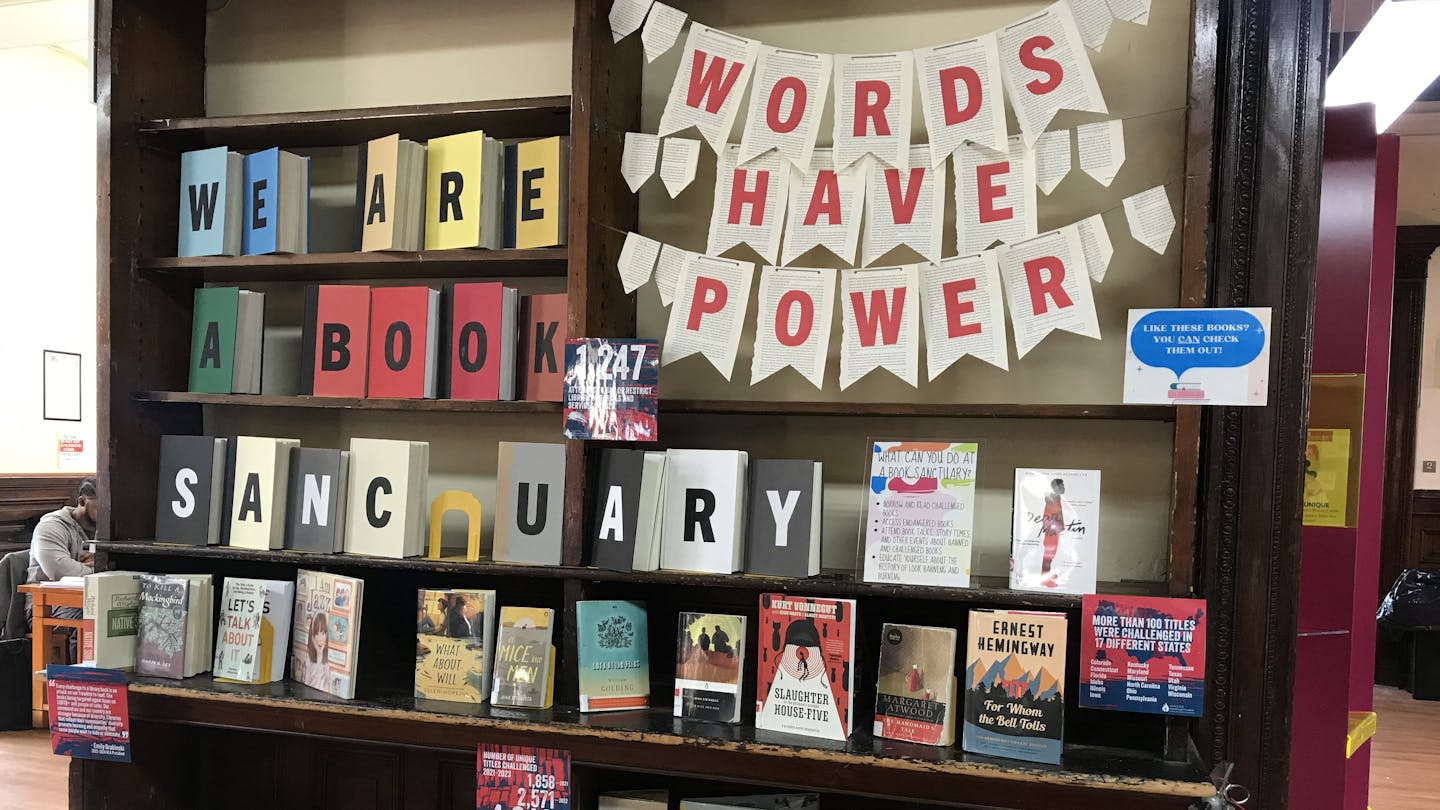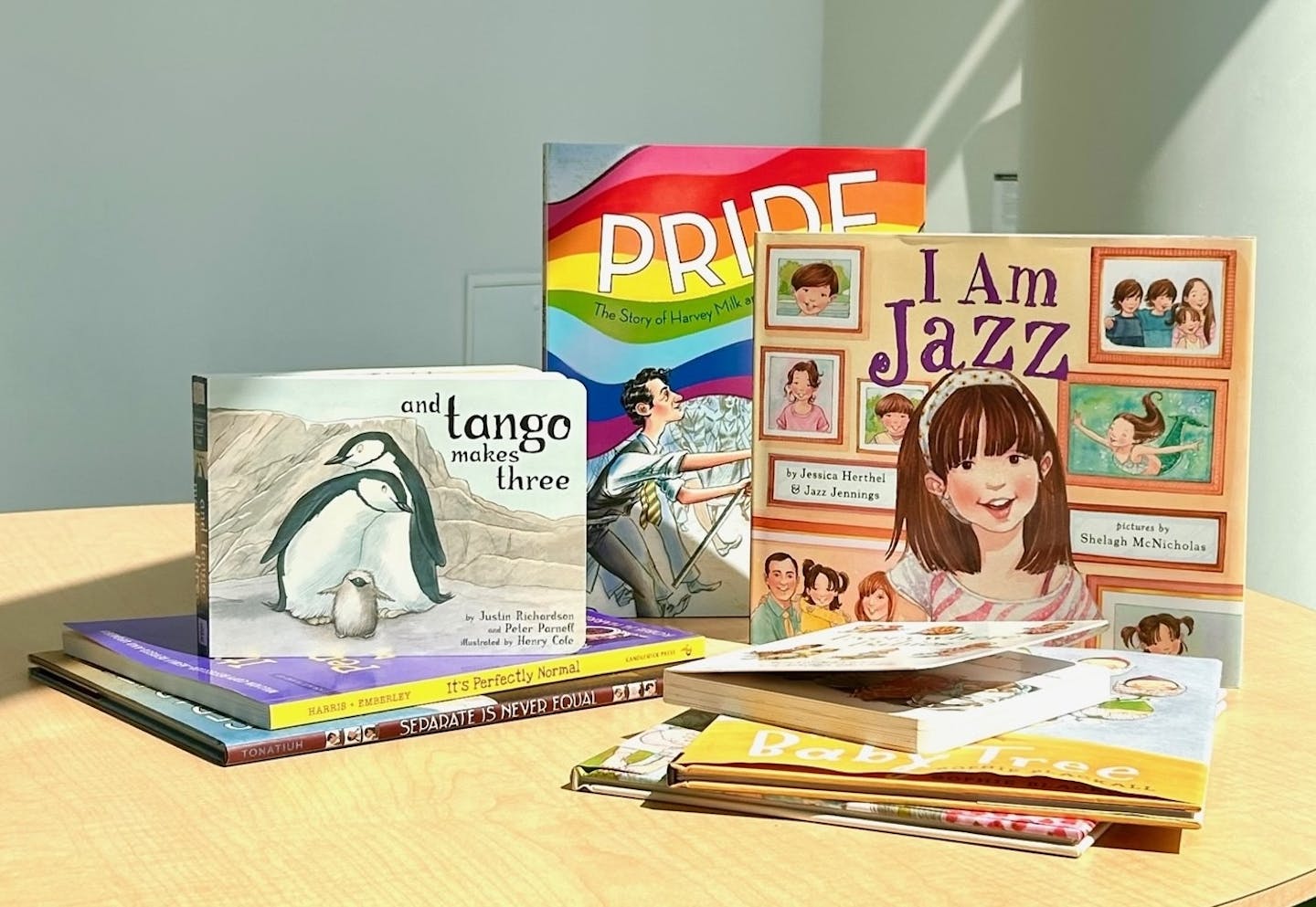
Over the past decade, a growing movement to restrict access to books in public schools and libraries has spread across the country. Every year, there are hundreds of attempts to challenge or ban books, targeting thousands of titles.
According to the nonprofit free speech advocacy group PEN America, there have been nearly 16,000 book bans in U.S. public schools and libraries since 2021, a number not seen since the 1950s under McCarthyism. The actual number of bans likely is much higher, since not every book ban gets officially reported.
During the 2020s, book banning has become a viral phenomenon. Small, conservative nonprofits such as Moms for Liberty, founded in 2021, have developed and expanded their advocacy for book bans at the local, state and national levels. These groups position themselves as defenders of parental rights against obscenity in education, while interpreting “obscenity” broadly enough to include so-called “woke” ideologies.

And while not all efforts to ban books are successful, these groups have been extremely effective. For example, from July 2021 to June 2022 there were 2,532 instances of books being banned across 32 states, affecting 1,648 different books, according to the “Banned in the USA” report by PEN America.
In early 2023, we were part of a team that researched book bans enacted over the course of the 2021-2022 school year. We found that during this period, the books’ covers appeared just as likely to lead to a ban as the words on the page.
Targeting diversity
Many organizations work to protect books that depict the vibrancy of American culture, including PEN America, the American Library Association, the Authors Guild and the Digital Public Library of America. Their scholarship has consistently shown that the contemporary book banning movement is a transparent effort to suppress depictions of cultural, racial, sexual and gender diversity in public education.
Most media coverage has focused on frequently targeted books, such as George M. Johnson’s memoir “All Boys Aren’t Blue” or Maia Kobabe’s “Gender Queer.” Yet these works represent only a small percentage of the wide range of titles that are being banned.
Looking at the broader array of books challenged and banned during the 2021-2022 school year, our research showed that this organized effort has consistently targeted representations of minorities in children’s and young adult books, both fiction and nonfiction.

Judging books by their covers
Our research team purchased more than 1,600 books that PEN America had reported as challenged or banned in the 2021-2022 school year. We digitized physical copies and converted e-books to create a data set for scholarly analysis.
As we examined each book, clear patterns emerged. The vast majority of the books had been published since 2000. Nonfiction titles, which made up one-fourth of the total, were often written to help children engage with complex topics in age-appropriate ways.
For example, “It’s Perfectly Normal: Changing Bodies, Growing Up, Sex, and Sexual Health” featured illustrations and scientific language to teach children about their changing bodies. Another book, “Peaceful Fights for Equal Rights,” used lyrical writing and cut-paper collages to teach children about civil disobedience.
Other books seemed to be targeted for no discernible reason, beyond having narrators or protagonists who were children of color. Typically, these fictional stories explored uncontroversial topics. Examples include “Lola at the Library” and “Cece Loves Science.”
All of these books’ covers depicted racial, gender or sexual diversity. This made us wonder whether book banishers were simply judging books based on their cover art, rather than the content of their stories.
Who’s in the picture?
When we looked at the 1,648 books banned in the 2021-2022 school year, our qualitative analysis found that the book covers most often depicted women, people of color or LGBTQ identities. Over 80% of books targeted for bans included human figures, and roughly two-thirds of the books with figures on the cover featured nonwhite characters and characters who appear female. Even when book covers displayed white characters, one-third placed them beside people of color.
While 30% of banned books with figures on the cover featured only white characters, more than half of these – over 200 books – exhibited only characters who did not look conventionally male and highlighted feminist or LGBTQ topics and perspectives. Less than 10% – only 98 books – presented solely white, male characters on the cover. Of this group, over 10% still depicted some kind of romantic, same-sex relationship.
Based on the book cover designs alone, our research team determined that the vast majority of the books selected for banning explicitly represented racial, gender and sexual minorities in their cover art. The remainder typically focused on mental health issues, broadly speaking.
Across all the books we examined, the cover art consistently reflected the contents of the books. In addition, most of the banned books also contained language in their titles and summaries visible on the back cover that further signaled topics pertaining to issues of diversity.
A broader attack on libraries
Until 2025, book bans were enacted at the local and state levels. Now, however, the Trump administration is attacking public resources more generally, affecting not just youth but anyone who uses public libraries.
In January 2025, the U.S. Department of Education ended its role investigating book bans. For fiscal year 2026, the administration is proposing to eliminate the federal Institute of Museum and Library Services, which provides about US$211 million annually in grants and support for museums and libraries.
By monitoring and censoring the titles that libraries can carry, book bans ultimately serve to discredit these institutions’ authority and justify defunding them.
As the U.S. observes Banned Books Week from Oct. 5-11, 2025, we believe it is more vital than ever for the public to understand the value of public schools and libraries. One promising development occurred in August 2025, when a federal judge overturned a Florida book ban law on First Amendment grounds. This ruling may offer some hope for similar challenges to book bans in other states.
Banning books doesn’t remove cultural, racial, sexual or gender diversity from U.S. communities. But it can remove depictions of a diverse society from public schools and neighborhood libraries.
Bans also undermine the professional authority of teachers, librarians and authors, all of whom work hard to guide young people to find books that will help them develop and broaden their horizons. Removing books from schools and libraries only jeopardizes these institutions’ mission to promote free and open access to information in the communities where Americans live and learn.
This article is republished from The Conversation, a nonprofit, independent news organization bringing you facts and trustworthy analysis to help you make sense of our complex world. It was written by: Alex Wermer-Colan, Temple University and SaraGrace Stefan, Temple University
Read more:
- Most US book bans target children’s literature featuring diverse characters and authors of color
- Trump administration seeks to starve libraries and museums of funding by shuttering this little-known agency
- When are book bans unconstitutional? A First Amendment scholar explains
Alex Wermer-Colan received funding from the Mellon Foundation. Alex Wermer-Colan is the Managing Editor of the Programming Historian in English and the Executive Director of Philly Community Wireless.
SaraGrace Stefan received funding from the Mellon Foundation.


 The Conversation
The Conversation
 The Journal Gazette
The Journal Gazette KNAU
KNAU NPR
NPR Cover Media
Cover Media Associated Press Top News
Associated Press Top News Reuters US Domestic
Reuters US Domestic Raw Story
Raw Story Reuters US Politics
Reuters US Politics KETK Entertainment
KETK Entertainment The Hill
The Hill